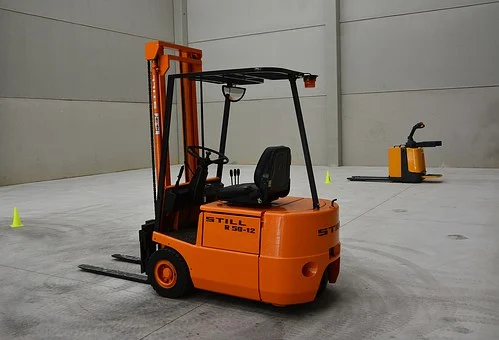Different Types Of Forklift Training

Forklifts come in all shapes and sizes so it is essential to comprehend how each and everyone of them operates. With so many warehousing, manufacturing and storage businesses using forklift trucks, the understanding of the different types of forklift training is absolutely vital for employee safety. This is because the amount of accidents in the workplace is continuously rising which is something which needs to be rectified and can be achieved with appropriate training.
Forklifts are essential pieces of machinery in the modern working environment. They allow for the easy movement and storage of products. However, these valuable pieces of technology can also be very dangerous and cause fatal accidents to both the users and passers-by.
These accidents typically occur due to the driver’s error and so it is necessary that greater emphasis is placed on forklift truck training to reduce workplace injuries. As such, this article will dive into the different types of forklift training that is on offer to help hone your skills around the workplace.
When discussing the different types of forklift training, it is important to understand that there are many different types of forklift trucks in general.
It is also worth noting that the most common type of forklift is the counterbalance forklift and is by far the most populated type of machinery that is bought and used. Similarly, the new and used reach trucks are also very popular but all depends on the industry and application they are required for.
The Law Regarding Forklift Safety
At a first glance, Health and Safety Executive have written the following in relation to the laws of forklift truck training:
“The Provision and Use of Work Equipment Regulations 1998 (PUWER) place certain requirements on employers. You must make sure that all people who use, supervise or manage the use of work equipment have received adequate training. This includes:
- The correct use of the equipment
- Any risks from equipment use
- The correct precautions to take
If you are self-employed, you need to do the same type of training and achieve the same standard as employers are required to provide to their employees.
Furthermore, the Health and Safety Executive (HSE) continues to publish the types of employees that should forgo forklift training. They are require to be:
- Reasonably fit, both physically and mentally, to safely control and operate lift trucks, with the learning ability and potential to become competent operators
- Reliable, with a responsible attitude to their work
- Physically capable – Employees may need to get medical advice and employers need to make reasonable adjustments to enable some disabled people to work as lift-truck operators (Equality Act 2010)
- Over the minimum school-leaving age (16), except in ports, where they must be at least 18 years old, unless they are undergoing a suitable course of training, properly supervised by a competent person
- Children under 16 should never operate lift trucks

Different Types Of Forklift Training
Level of Training
Forklift training for each forklift truck can be taken at different levels. The most common type of training being the Forklift truck refresher training. In the UK, there are four different types of forklift training skill categories:
- Novice training – This is for employees who have no prior knowledge operating forklift trucks. This training is usually the lengthiest of the four types, due to having to cover all the basics. The typical novice training course lasts between four and five days, but can vary depending on the size of the class.
- Conversion training – This is for those who have experience with some type of forklift truck but wish to advance into other types. The very basics of forklift driving and safety that apply to all forklifts will not need to be covered as much in this training course, making it slightly quicker than novice training. Training will focus on the unique features and operational controls of that specific truck.
- Semi-experience operator training – This type of training is more uncommon than the other 4 training levels. Semi-experience operator training is useful for those who have learnt to drive forklifts elsewhere, such as in a garden or other private property, but don’t have formal training. This will provide them with the necessary certifications to be able to use forklifts legally to perform their job.
- Refresher training – The most common type of training. This is for people who have already completed their forklift training but wish to brush up on their skills or get up to speed with changing industry rules and regulations. Forklift truck refresher training is not mandatory but it is heavily recommended to undergo every three years at the very least. If you choose not to undergo the forklift truck refresher training every three years and you are involved in an accident you may be deemed to be negligent.
Free Forklift Truck Training
For those who are looking to brush up on their forklifting skills, there are many free forklift truck training sites you can read upon. Unfortunately, in order to experience the full value of your training, you will be required to make a payment to have hands-on learning of the forklift; however, you can view the very basics of free forklift truck training online. Finally, here at Trucks Direct, we advise forklift drivers to take the necessary training from Certora Training Services to help practice and develop their forklift/warehouse operations skills. This is due to their courses meeting the standards set by the Accrediting Bodies Association (ABA) who are advised on training procedures by the HSE.
